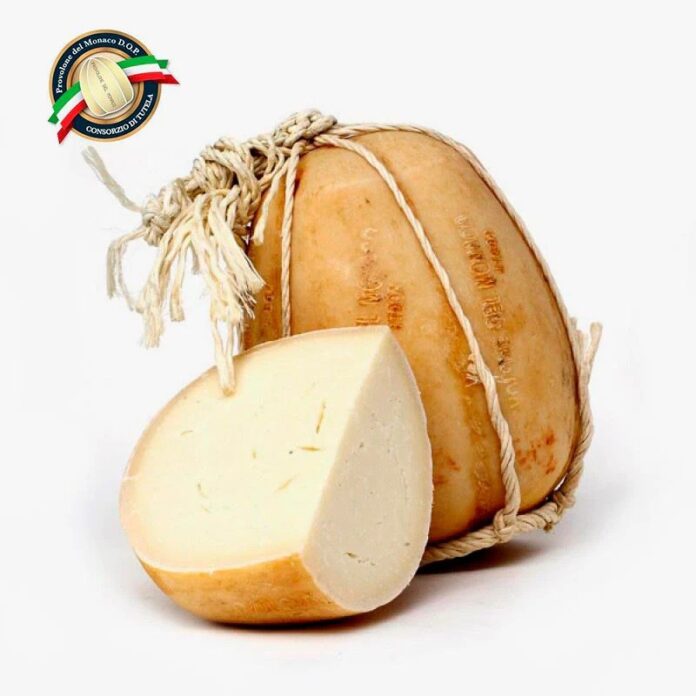Everything You Should Know About This Popular Cheese
The Origin Of Provolone Cheese
If there’s one thing that provolone cheese is full of, it’s character. This cheese has historic roots in both ends of Italy, but it’s found itself a permanent home in the northern regions of Val Padana. Of course, thanks to the help of Italian immigrants, provolone has made its way into the hearts and stomachs of international cheese lovers.
Part of what has made provolone so enduring and beloved is its versatility in cooking and unique flavor profile. It can be used in a variety of dishes, from sandwiches and pizzas to gratins and salads. Depending on the age of the cheese, the flavor of provolone can vary from mild and creamy to sharp and tangy. Another aspect of provolone’s claim to fame is its production process, which we’ll detail below.
How Authentic Provolone Is Made
Now that you know a bit about this cheese, let’s delve into the production process. Like most cheeses, this is a process that starts off with high-quality cow’s milk. To start the cheesemaking process, this milk is enriched with natural whey and rennet, a critical step in forming the curd.
Once the milk has coagulated into curd, it is allowed to rest. This resting phase is essential for developing texture and flavor. The curd is then cut and separated not once but twice, ensuring a fine consistency. Excess whey is then drained away.
Workers then take over to perform a task that is similar to juggling. They weave and shape the uncured cheese into tight rondures. This stage is crucial for eliminating air bubbles, ensuring the cheese develops an even, flawless texture.
After shaping, the cheese undergoes brining, absorbing saltiness, and beginning its maturation process. It is then cooled to halt the action of the cultures. Hanging in strings, the cheese rests and matures in a controlled environment for a minimum of two months. The age of the cheese, of course, has a high impact on its flavor! Older provolone is much sharper than its sweeter, younger counterparts.
Ingredients and Dietary Considerations
Like many Italian cheeses, provolone is celebrated for its simplicity. It is typically pasteurized and gluten-free, containing no added fillers or preservatives, which can be appealing for those seeking natural food options.
However, traditional recipes use calf rennet, making it unsuitable for vegetarians. Consumers are advised always to check the label, especially if dietary restrictions are a concern!
What Are Some Provolone Cheese Substitutes?
While provolone’s unique taste is irreplaceable, there are a few substitutes that can mimic it in recipes. Mozzarella, also a pasta filata cheese, offers a similar texture with a milder taste. For a cheese with a bit more tang, Gouda or Edam can provide a similar mouthfeel and a slight nuttiness. A mild Cheddar or Emmental might serve well in a pinch if the goal is to match provolone’s sharpness, especially if you want to copy the aged variety.
Provolone Vs. Provola: What’s The Difference?
Though similar, provolone and provola differ in a few key ways. Provolone is notably larger in size and exhibits a more potent flavor profile, which ranges from sweet to spicy, compared to provola’s sweet, slightly acidic taste. In terms of shape, provolone is available in a variety of forms, while provola typically features a cylindrical or pear shape, often marked by a noose at the top.
Provolone has its roots in Northern Italy and is protected by a Protected Designation of Origin (DOP) mark, restricting its production to specific regions, whereas provola, especially the buffalo milk variety, is primarily produced in Southern Italy.
Provolone Cheese Recipes And Pairings
If there’s one thing that’s true about provolone, it’s that it’s versatile! It’s a cheese that can be used in many recipes, from an addition to quick appetizers to a central ingredient in dinners. Here are some more details about all of the culinary possibilities that provolone cheese provides!
For a Start: Simple Snacks and Appetizers
- Provolone-Stuffed Peppers: Small sweet peppers filled with a mixture of provolone and cream cheese, baked until tender.
- Antipasto Skewers: Alternating pieces of provolone, cherry tomatoes, basil, and salami on skewers, drizzled with olive oil and balsamic reduction.
- Provolone with Figs and Prosciutto: Serve slices of provolone with fresh figs, thin slices of prosciutto, and a drizzle of balsamic glaze.
Main Course: Hearty Dishes
- Provolone Chicken Parmesan: Breaded chicken breasts topped with marinara sauce and a generous layer of melted provolone, baked to perfection.
- Baked Ziti with Provolone and Sausage: Layers of ziti pasta, Italian sausage, ricotta, marinara, and slices of provolone cheese, baked until bubbly and golden.
- Smoky BBQ Chicken Pizza: A smoky BBQ sauce base topped with chicken, red onions, cilantro, and slices of provolone cheese.
Pairing Provolone with Wines and Sides
- With Reds: Aged provolone pairs beautifully with full-bodied red wines like Cabernet Sauvignon or Chianti, which complement its sharpness.
- With Whites: Younger, milder provolone enhances the sweet notes of light white wines such as Pinot Grigio or Sauvignon Blanc.
Add Provolone To Your Kitchen Today
It doesn’t take much persuasion to understand what’s so lovable about provolone. Judging by the abundance of pairing opportunities, for instance, many have added this cheese to their weekly recipes. Now that you’re a provolone expert yourself you can, too!
Don’t just settle for the supermarket variety, though. The best way to enjoy provolone is by ensuring you’re getting the highest-quality cheese possible. So, if you’re ready to elevate your meals with authentic provolone cheese, don’t wait! Go out there and get some today.

